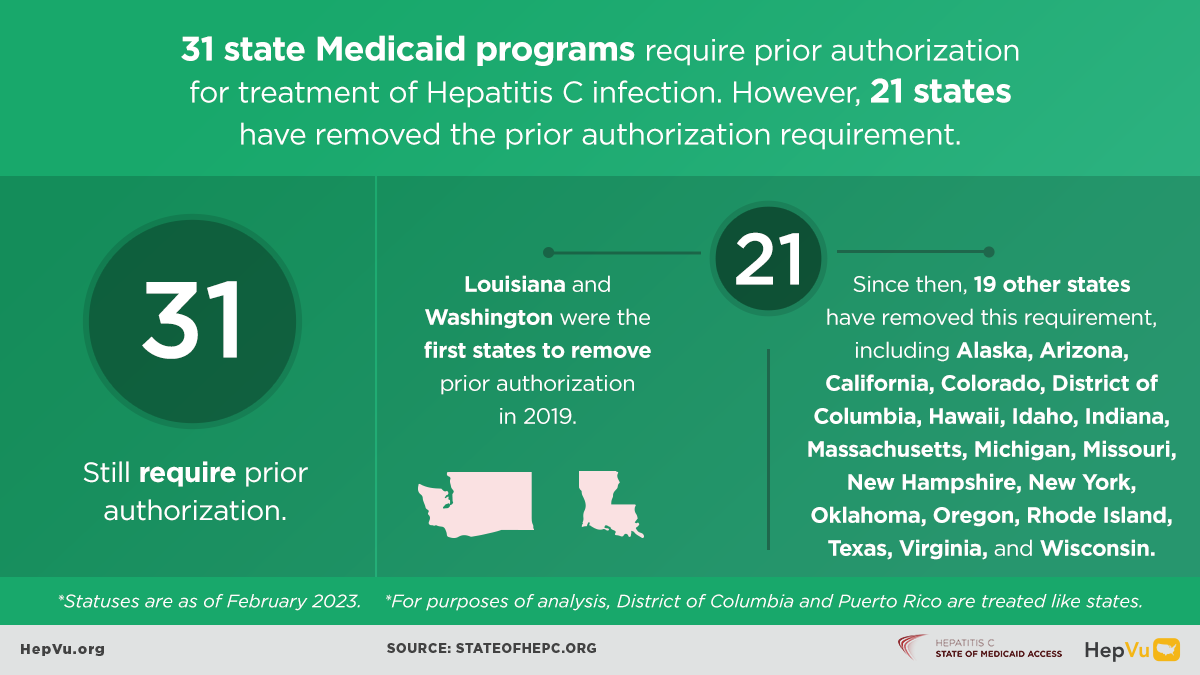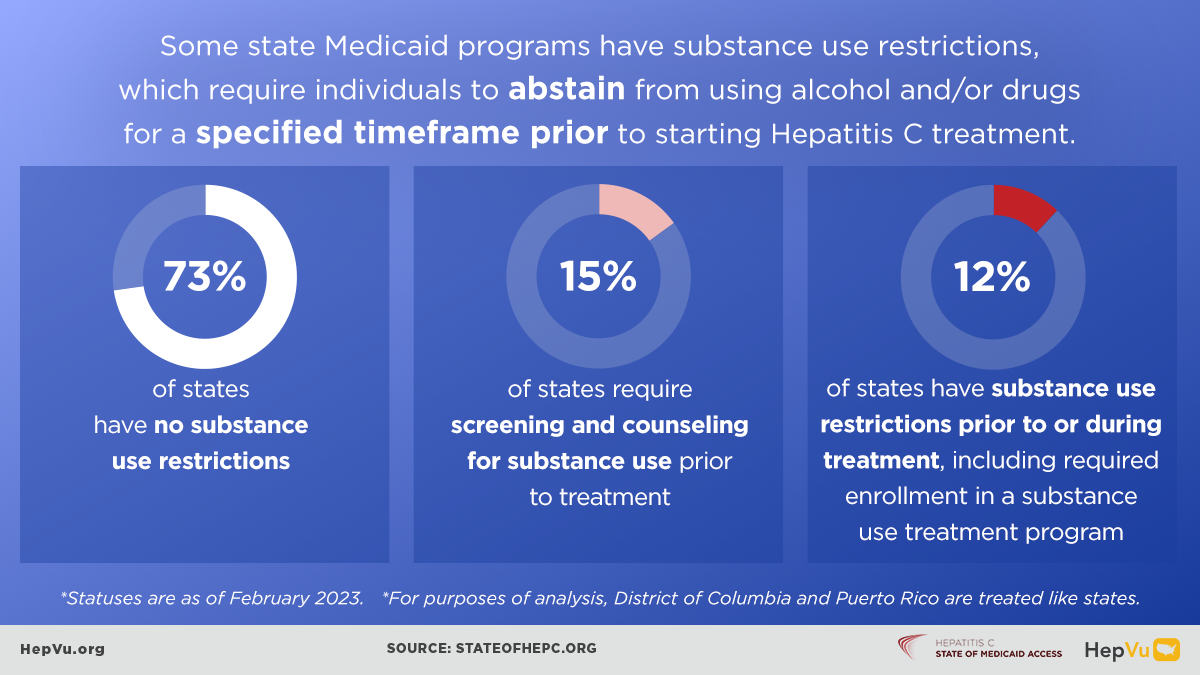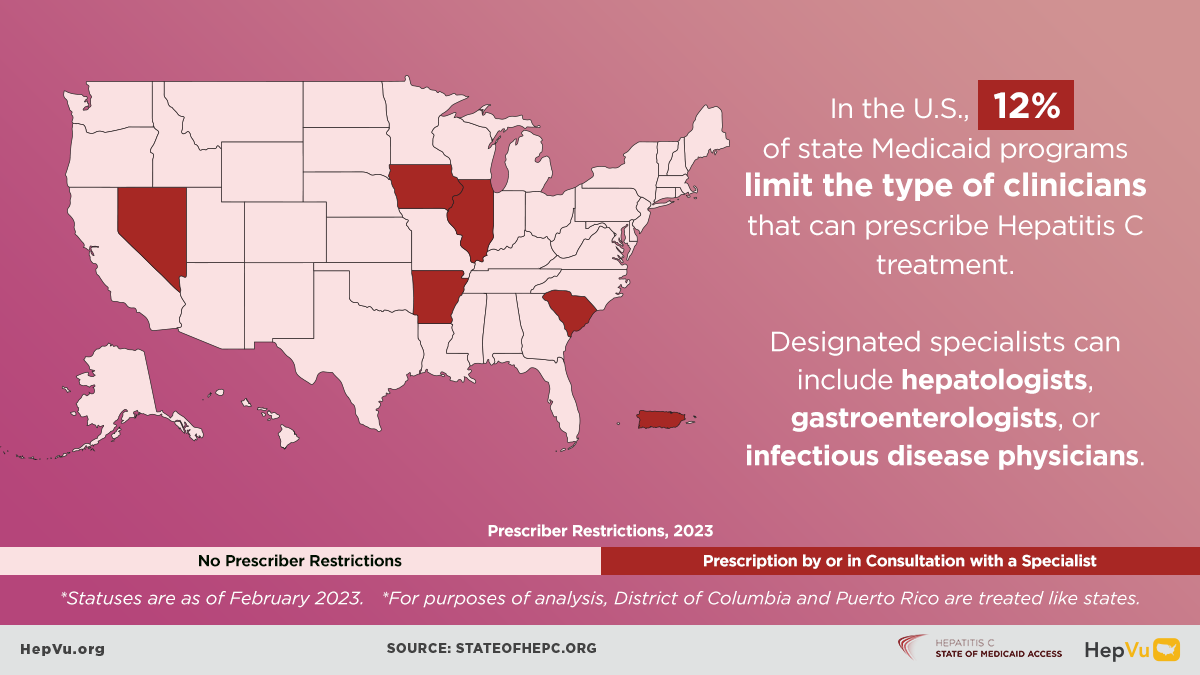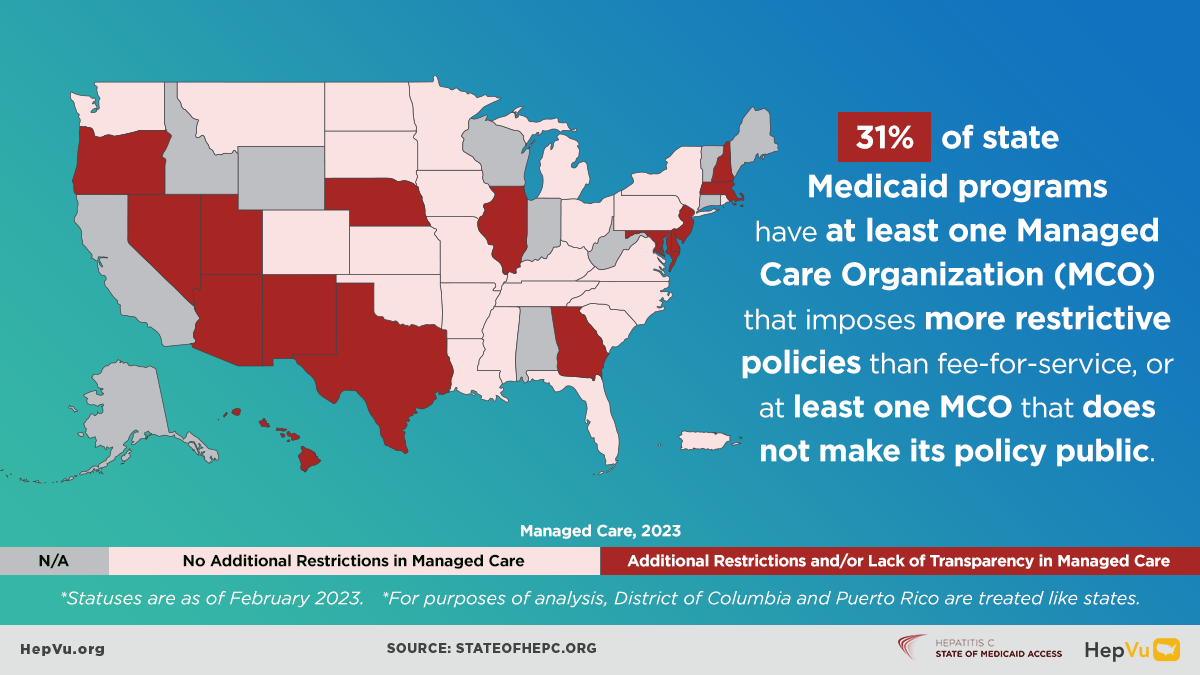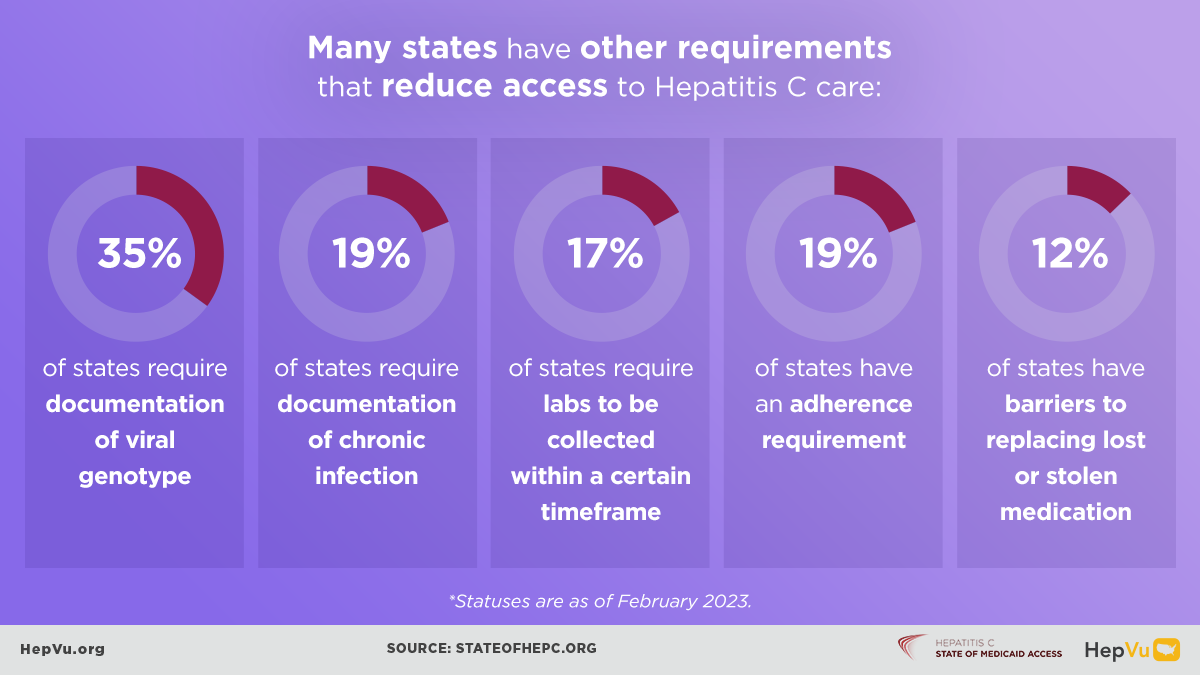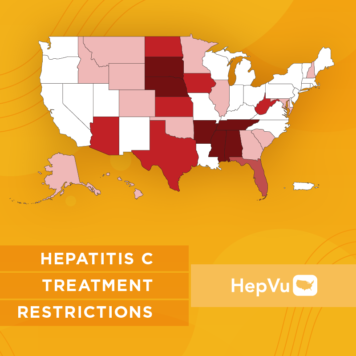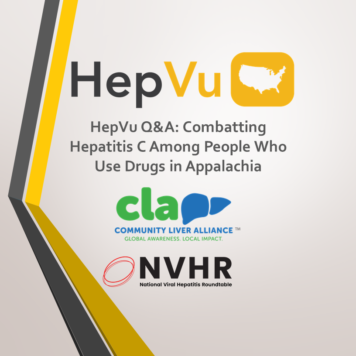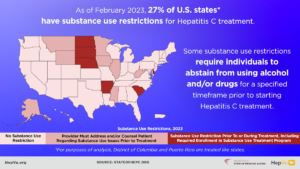
Today, HepVu added updated data and comparison maps visualizing Hepatitis C treatment restrictions at the state-level from 2017 to February 2023, utilizing insights and research findings provided by Hepatitis C: State of Medicaid Access, a joint project by the Center for Health Law and Policy Innovation (CHLPI) of Harvard Law School and the National Viral Hepatitis Roundtable (NVHR). Additionally, these treatment restrictions data are updated on HepVu’s state profiles, where users can get a complete picture of the viral hepatitis epidemic in their state.
Treatment restrictions are non-medically indicated criteria limiting access to lifesaving medications. When highly effective and curative direct-acting antivirals (DAAs) were introduced to treat Hepatitis C nearly a decade ago, many state Medicaid programs created restrictions for patients to access the new medications as a cost-saving measure. These treatment restrictions create barriers to life-saving treatment, perpetuate stigma, and undermine public health efforts to address the transmission of Hepatitis C.
The five major types of restrictions on Hepatitis C treatment employed by state Medicaid programs include:
- Fibrosis Level Treatment Restrictions – These restrictions require patients to reach a certain stage of fibrosis (liver scarring) before being able to access treatment for Hepatitis C
- Substance Use Treatment Restrictions – These restrictions require patients to abstain from using alcohol and/or drugs prior to or during treatment or require providers to counsel their patients regarding drug or alcohol before being able to access treatment.
- Prescriber Treatment Restrictions – These restrictions require a prescription for treatment to be issued by or in consultation with a specialist.
- Prior Authorization – These restrictions require patients to receive prior approval in order to receive treatment.
- Retreatment Restrictions – These restrictions require more severe restrictions for patients seeking retreatment.
The U.S. has made tremendous progress in eliminating or reducing treatment restrictions since tracking began in 2017. Due to the continued and diligent work of viral hepatitis organizations such as CHLPI and NVHR:
- 48 state Medicaid programs have eliminated or reduced fibrosis restrictions, 2 state Medicaid programs still retain this restriction.
- 39 state Medicaid programs have loosened sobriety restrictions, 13 state Medicaid programs maintain some degree of restrictions.
- 46 state Medicaid programs have scaled back prescriber restrictions, 6 state Medicaid programs maintain some degree of restrictions.
- 21 state Medicaid programs have removed prior authorization for treatment of Hepatitis C for most patients entirely, 31 state Medicaid programs still require prior authorization.
While much progress has been made, advocates continue to work towards eliminating barriers to care and increasing access to Hepatitis C treatment, especially for medically underserved populations such as communities of color and people who inject drugs. To get involved and help advocate to eliminate these treatment restrictions, explore Hepatitis C: State of Medicaid Access.
For more information on the data source and limitations, see our Data Methods.
To learn more about Hepatitis C treatment restrictions, explore HepVu’s resources:
- Visualize the current landscape of Hepatitis C treatment restrictions at the state-level with HepVu’s interactive maps.
- Explore our local data profiles to learn about Hepatitis C treatment restrictions in your state.
- Read expert-led Q&As on Hepatitis C treatment restrictions:
- Find available viral hepatitis testing and care services near you with HepVu’s service locators.
- Share our infographics with your networks to raise awareness.
- Download our data sets.

